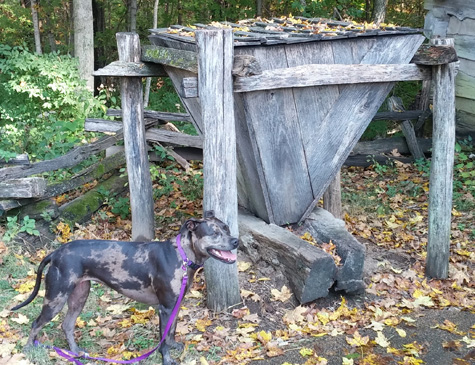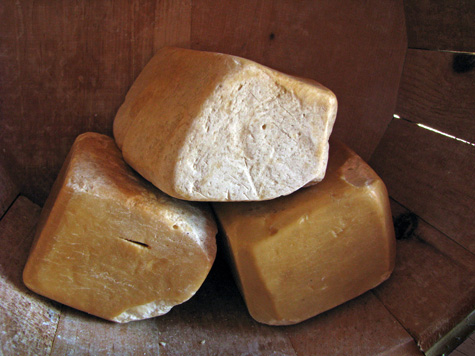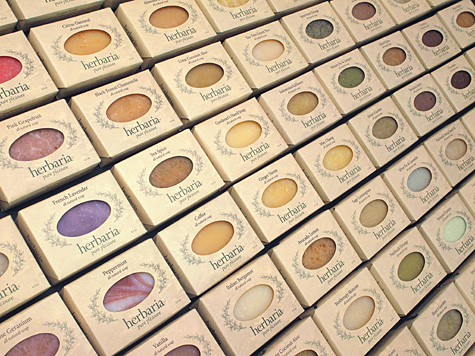- Regular Bars $6.95
- ✱ Premium Bars $8.95
- Almond Aloe
- ✱ Almond Green Tea
- ✱ Almond Spice
- Avocado Lemon
- Balsam Fir & Juniper
- ✱ Bay Rum
- Biotherapy Black
- Biotherapy Skincare
- Black Forest Chamomile
- Brown Windsor
- Camper's Choice
- Cedar Cypress
- ✱ Chai Spice
- ✱ Chocolate
- Citrus Oatmeal
- Eucalyptus Mint
- Evergreen
- Fennel Mint
- ✱✱ Frankincense & Myrrh
- French Lavender
- Gardener's Hand Soap
- Ginger Neem
- ✱ Indonesian Safflower
- Island Spice
- Italian Bergamot
- LaRee's Scent Free
- Lavender Licorice
- Lavender Oatmeal
- Licorice
- Lime Coconut Aloe
- May Chang
- Meteor Showers
- Mojito
- Natural Citronella & Marigold
- Old-Fashioned Lye
- ✱ Patchouli Hemp Seed Oil
- Patchouli Orange
- Peppermint
- Pink Grapefruit
- Pink Grapefruit Eucalyptus
- Pompeii Pumice
- Rose Geranium
- Rosemary
- Rosemary Mint
- Rosy Bouquet
- Saffron Gold
- Sage Lemongrass
- Sassafras Birch
- Sea Spice
- Shaw's Garden
- Silver Fir & Lavender
- Sink Side Kitchen Soap
- Soapy's Choice
- Spearmint Orange
- Sugandha Kokila & Laurel
- Sweet Orange & Vanilla
- Tea Tree Green Tea
- Tomato Surprise
- Traveler's Choice
- Triple Mint Oatmeal
- Tutti Frutti
- Vanilla
- ✱ Vetiver Walnut
Early American Soap Making

Soapy stands by an old ash hopper in Lincoln's New Salem, Illinois.
Soap Basics
Soap is made from fats and lye, just as it has been for thousands of years. The fatty acids of the oils combine with a base (alkali), to form the salt called soap.
![]()
Early Settlers
People in the 18th and 19th centuries made their own soap. They'd save tallow from butchering and grease from cooking for the fat. They'd reserve wood ashes to make potash, the alkali.
How Potash Was Made
Folks would put wood ashes in barrels, hollowed-out logs, or V-shaped troughs lined with hay. Water was poured through the ashes and leached out the potash or, more scientifically, potassium hydroxide. Filtered by the hay, the potash drained through a hole in the bottom. Then the solution was reduced as near as possible to the right concentration by boiling or repeatedly pouring the liquid over the ashes.
Making Soap
Animal fat was melted and added to the potash. The mixture was stirred until the chemical reaction turned the fat into soap.

The soap was poured into wooden molds and allowed to cure. When it hardened, it was cut into bars.
Harsh Quality
The quality of soap varied widely. It often contained excess or unreacted potash, which produced a caustic soap.

The harsh soap produced was used for laundry and housecleaning. People didn't bathe with soap until the Civil War when germ theory caught on. Heath and hygiene improved greatly. Companies like Procter & Gamble began making soap for bathing.
Herbaria soap is made the old-fashioned way, but with advanced chemistry. Modern methods call for lye, sodium hydroxide, rather than potash. Extracted from seawater, lye concentration is consistent. With proper formulation, all the lye is used up turning the fats into soap—no lye is left in the finished bars.
Our soap may be called old-fashioned lye soap, cold-process soap, or, since it's made with all vegetable oils including olive oil, Castile soap.

Glycerine
Our bars contain about 9% glycerin, a by-product of vegetable fats (triglycerides) turning into soap. Glycerin is a humectant, attracting moisture from the air, further adding to the moisturizing quality of our bars.
Pleasing Additions
We add natural ingredients to make over 60 soap varieties. Oatmeal exfoliates and soothes the skin, clays make a creamy lather, pumice and cornmeal provide friction for scrubbing hands clean.
Unlike big commercial brands, we never use petroleum-based detergents, synthetic fragrances, artificial colorants, or preservatives.
All-Natural Scents
Our marvelous aromas come from essential oils, herbal treasures like lavender, eucalyptus, and tea tree.
Moisturizers
Extra emollients such as shea butter, almond oil, and avocado oil moisturize your skin, leaving it feeling clean yet silky.
Bottom Line
Our bars are better for your skin.
View our Regular bars.





